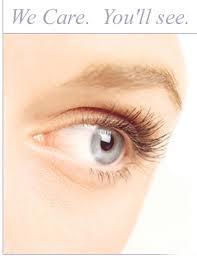
Your vision seems great. Your eyes feel completely fine. So you may be putting off that visit to the eye doctor. But if you haven’t seen your eye care professional in a while, you might have an eye problem that you don’t know about.
“Many eye diseases have no early warning signs,” says Dr. Janine Austin Clayton, an ophthalmologist and deputy director of NIH’s Office of Research on Women’s Health. “You may not notice anything. So it’s critical to have your eyes examined on a regular basis.”
A comprehensive dilated eye exam involves looking at all the parts of your eye. It also tests eye movement, the reaction of your pupil to light and the fluid pressure inside your eyes.
“It’s critical to pay attention to your eye health, because eye health actually is a reflection of overall health,” Clayton says. Changes in the eyes, for example, can tip a doctor off that you have diabetes.
Comprehensive dilated eye exams can catch problems that could lead to blindness and visual impairment while they can still be halted or reversed. If you have glaucoma or diabetic eye disease (a group of eye problems that can accompany diabetes), you may notice a problem only when it’s too late to regain your lost vision.
Glaucoma, for example, first affects your side, or peripheral, vision, which can be hard to notice. If left untreated, the vision loss will continue to move toward the center of your vision. “It’s a painless process,” Clayton says, “much like hypertension or high blood pressure can be painless.”
Having regular eye exams can help detect eye diseases in their early stages, when they can still be treated. Regular eye exams are important for everyone, but especially for African Americans over age 40, those with a family history of eye disease, people with diabetes and everyone over 60.
An eye exam can also spot uncorrected refractive errors, meaning your eye is out of focus. Uncorrected refractive errors affect more than 11 million Americans, according to a recent study by NIH’s National Eye Institute. Eye care professionals usually prescribe eyeglasses or contact lenses to solve the problem. More than 150 million Americans now use corrective eyewear.
How often you should have your eyes examined depends on your age, family history and other risk factors. Your eye care professional can tell you when your next exam should be.
If you haven’t had an eye exam for a while, now’s the time. Your eyes are an important part of your health. Healthy vision can help keep you safe while you’re driving, participating in sports and taking part in recreational activities. It can also help you maintain a healthy and active lifestyle well into your golden years.
What is a comprehensive dilated eye exam?
A comprehensive dilated eye exam is a painless procedure in which an eye care professional examines your eyes to look for common vision problems and eye diseases, many of which have no early warning signs. Regular comprehensive eye exams can help you protect your sight and make sure that you are seeing your best.
What does a comprehensive dilated eye exam include?
A comprehensive eye examination includes:
Dilation
Drops are placed in your eyes to dilate, or widen, the pupils. Your eye care professional uses a special magnifying lens to examine your retina to look for signs of damage and other eye problems, such as diabetic retinopathy or age-related macular degeneration. A dilated eye exam also allows your doctor to check for damage to the optic nerve that occurs when a person has glaucoma. After the examination, your close-up vision may remain blurred for several hours.

Tonometry
This test helps to detect glaucoma by measuring eye pressure. Your eye care professional may direct a quick puff of air onto the eye, or gently apply a pressure-sensitive tip near or against the eye. Numbing drops may be applied to your eye for this test. Elevated pressure is a possible sign of glaucoma.
Visual field test
This test measures your side (peripheral) vision. It helps your eye care professional find out if you have lost side vision, a sign of glaucoma.
Visual acuity test
This eye chart test measures how well you see at various distances.
group of eye problem
Diabetes
A disease in which the body has trouble controlling the level of sugar in the blood. It can lead to serious problems including heart disease, kidney failure and blindness.
Glaucoma
A group of eye diseases caused by fluid pressure building inside the eye. This can damage blood vessels and eventually the optic nerve—the bundle of nerve fibers that sends visual information to the brain.
Here are some tips for finding an eye care provider:
Ask family members and friends about their providers.
Ask your family doctor for the name of a local eye care specialist.
Ask your insurance company or health plan what eye care professionals are covered under your plan.
Contact the department of ophthalmology or optometry at a nearby hospital or university medical center.
Contact a state or county association of ophthalmologists or optometrists to see if they have eye care professionals listed by specialty and experience.
Ask a library reference specialist for resources about finding health care professionals.


